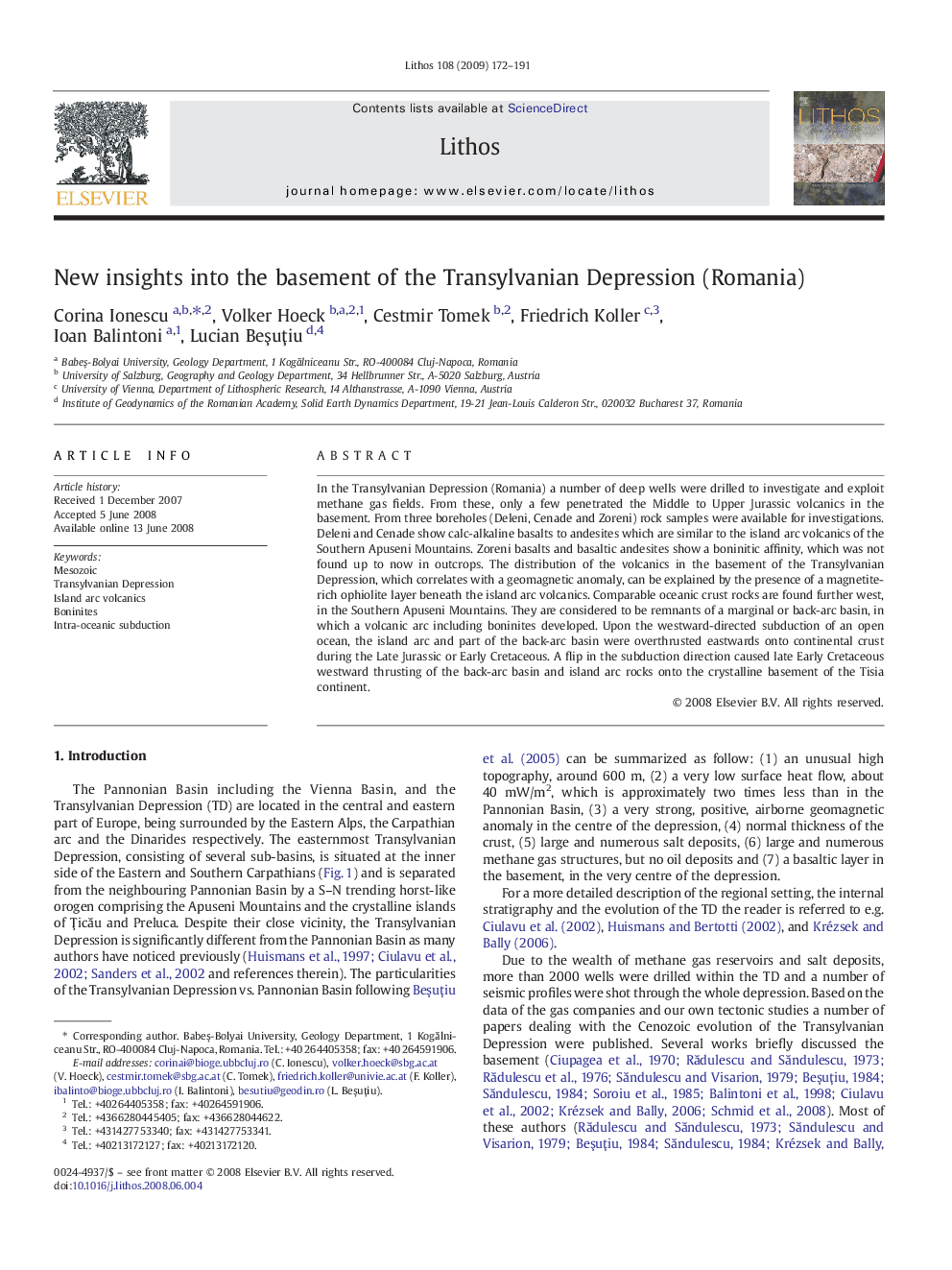| Article ID | Journal | Published Year | Pages | File Type |
|---|---|---|---|---|
| 4717374 | Lithos | 2009 | 20 Pages |
In the Transylvanian Depression (Romania) a number of deep wells were drilled to investigate and exploit methane gas fields. From these, only a few penetrated the Middle to Upper Jurassic volcanics in the basement. From three boreholes (Deleni, Cenade and Zoreni) rock samples were available for investigations. Deleni and Cenade show calc-alkaline basalts to andesites which are similar to the island arc volcanics of the Southern Apuseni Mountains. Zoreni basalts and basaltic andesites show a boninitic affinity, which was not found up to now in outcrops. The distribution of the volcanics in the basement of the Transylvanian Depression, which correlates with a geomagnetic anomaly, can be explained by the presence of a magnetite-rich ophiolite layer beneath the island arc volcanics. Comparable oceanic crust rocks are found further west, in the Southern Apuseni Mountains. They are considered to be remnants of a marginal or back-arc basin, in which a volcanic arc including boninites developed. Upon the westward-directed subduction of an open ocean, the island arc and part of the back-arc basin were overthrusted eastwards onto continental crust during the Late Jurassic or Early Cretaceous. A flip in the subduction direction caused late Early Cretaceous westward thrusting of the back-arc basin and island arc rocks onto the crystalline basement of the Tisia continent.
